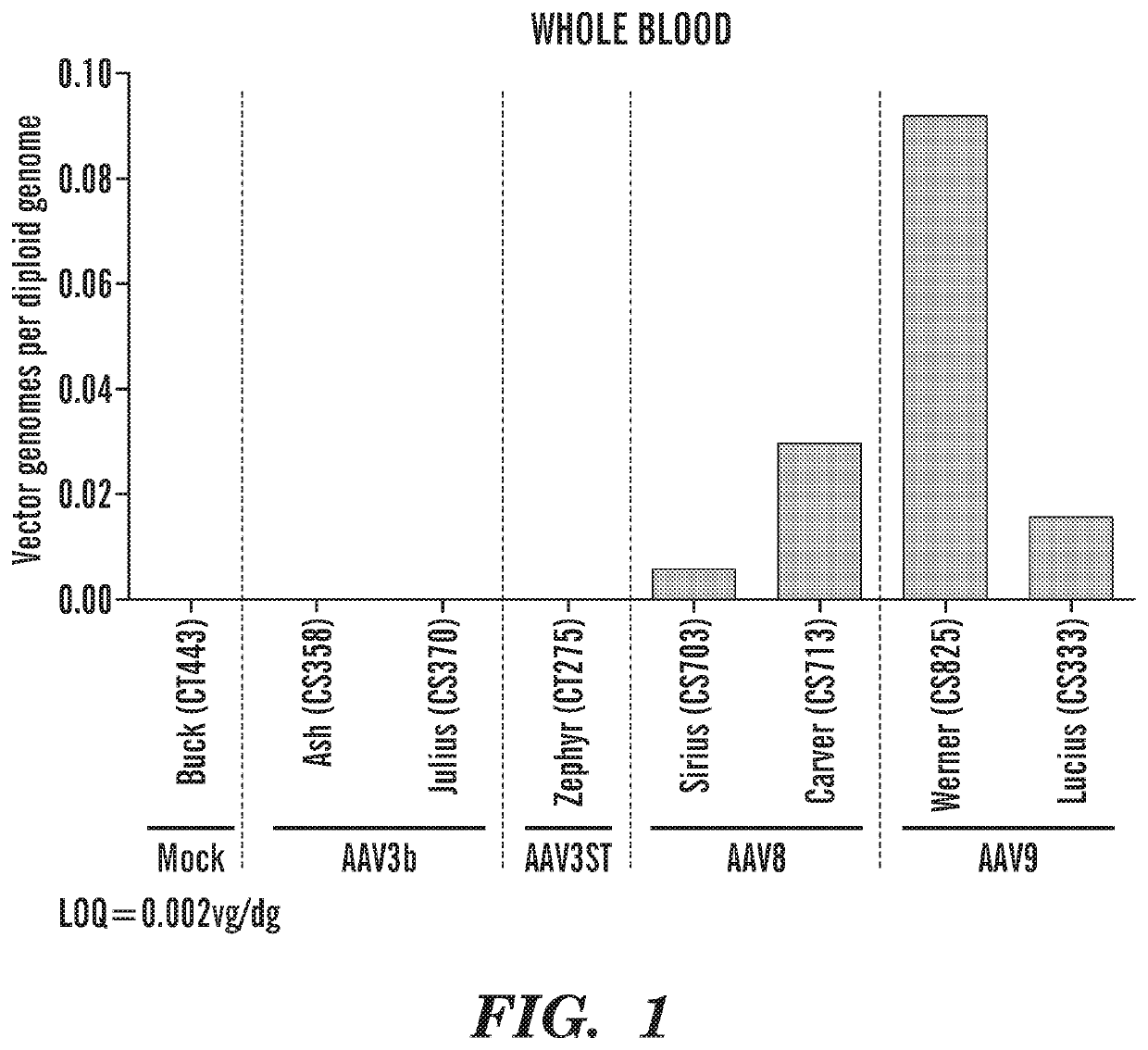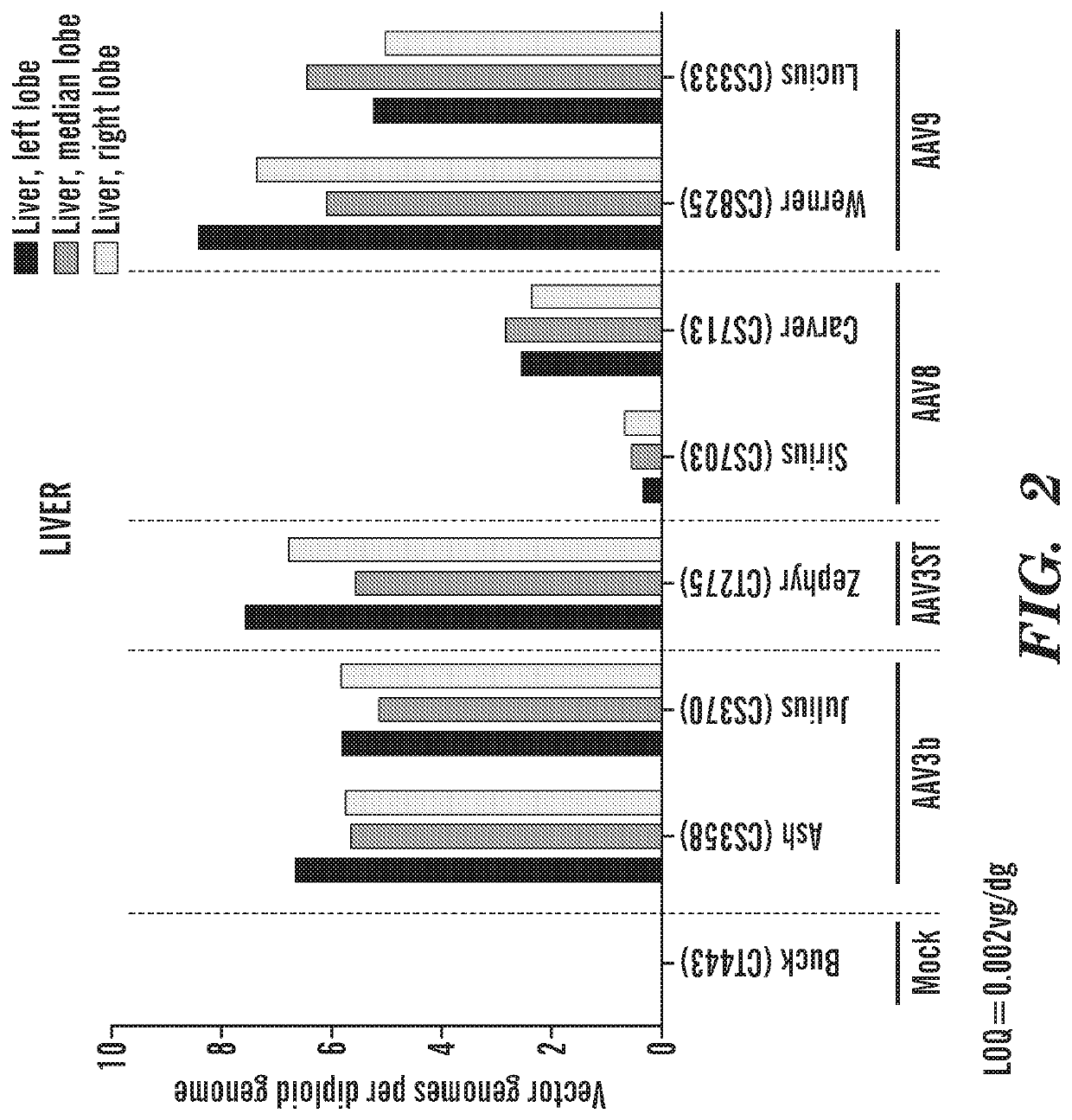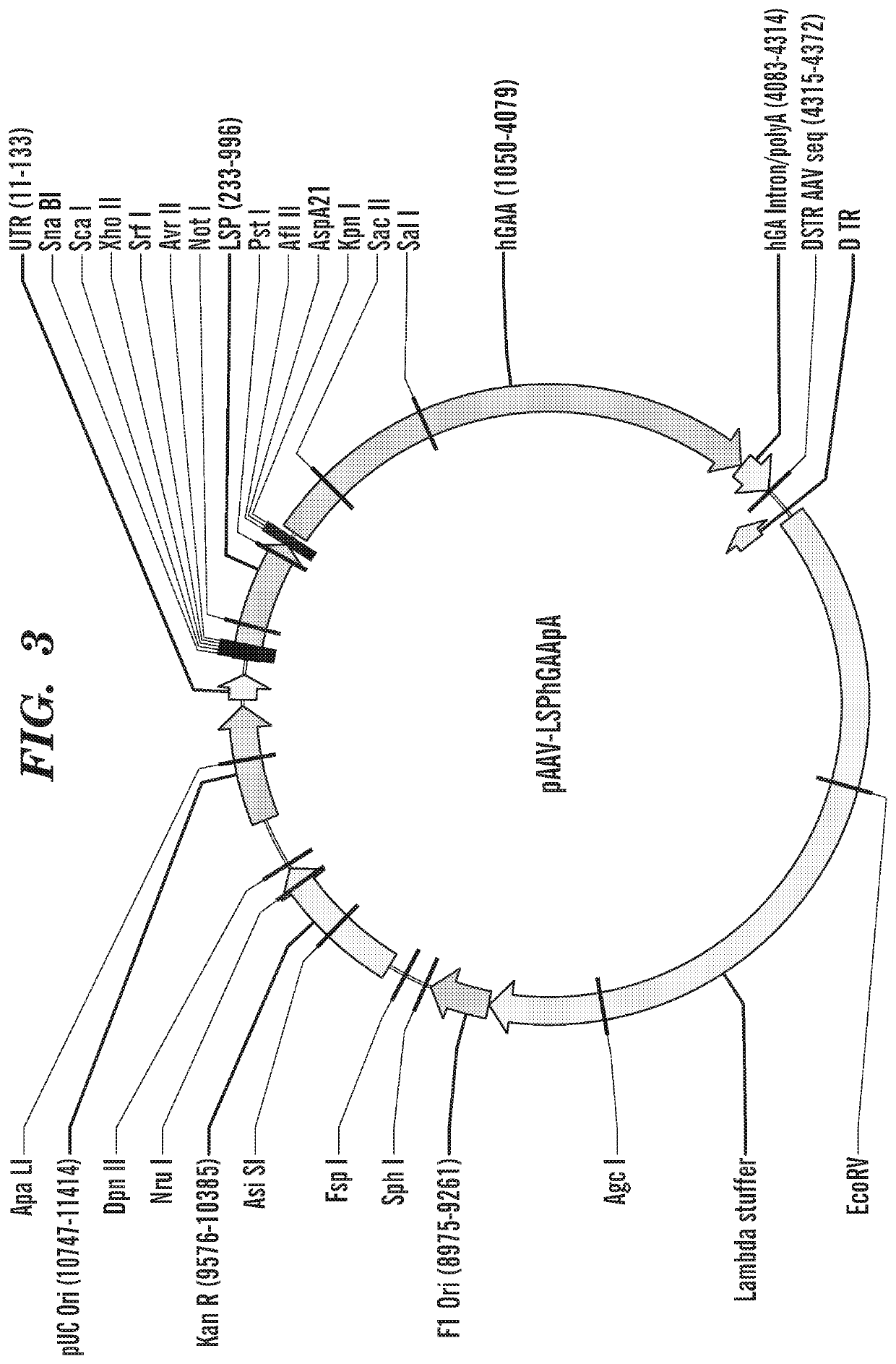Vectors comprising a nucleic acid encoding lysosomal enzymes fused to a lysosomal teargeting sequence
a nucleic acid encoded, lysosomal technology, applied in the direction of viruses/bacteriophages, genetic material ingredients, hormone peptides, etc., can solve the problems of lysosomal protein and enzymes used in lysosomal storage diseases, which are difficult to deliver viruses or aav genes, and lack the addition of m6p to recombinantly produced proteins used in enzyme replacement therapy
- Summary
- Abstract
- Description
- Claims
- Application Information
AI Technical Summary
Benefits of technology
Problems solved by technology
Method used
Image
Examples
example 1
ion of a Viral Vector, e.g., rAAV Genome
[0502]For exemplary purposes, the viral vector generated was a rAAV vector. One of ordinary skill in the art can understand that any viral vector can be modified to include the nucleic acids constructs as described herein. Additionally, the inventors generated exemplary viral vector that express a lysosomal targeting peptide (i.e., IGF2(V43M) fused to the the lysosomal enzyme GAA, where GAA is an exemplary lysosomal enzyme, e.g., for the treatment of Pompe as an exemplary lysosomal storage disease. One of ordinary skill in the art can appreciate that any lysosomal enzyme can be used in place of the GAA gene.
[0503]Numerous rAAV genomes were constructed using Gibson cloning methodology. The following rAAV genomes were generated: SEQ ID NO: 57 (AAT-V43M-wtGAA (delta1-69aa)); SEQ ID NO: 58 (ratFN1-IGF2V43M-wtGAA (delta1-69aa)); SEQ ID NO: 59 (hFN1-IGF2V43M-wtGAA (delta1-69aa).
[0504]Gibson cloning involves cloning blocks (e.g., 3 blocks) of nucleic...
example 2
g rAAV Vectors
[0506]The rAAV genomes were packed into capsids to generate rAAV vectors using a rAAV Pro 10 cell line. Solely for proof of principal of rAAV vector construction, the capsids used were AAV3b capsids.
[0507]Making rAAV Pro 10 cell line: triple transfection technique was used to make rAAV in suspension HEK293 cells, which can be scaled up for making clinical grade vector. Alternatively, different plasmids can be used, e.g., 1) pXX680-ad helper and 2) pXR3 the Rep and Cap 3) and the Transgene plasmid (ITR-transgene-ITR).
[0508]The rAAV genomes generated in Example 1 are used to generate rAVV vectors using the Pro10 cell line as described in U.S. Pat. No. 9,441,206, which is incorporated herein in its entirety by reference. In particular, rAAV vectors or rAAV virions are produced using a method comprising: (a) providing to the HEK293 cells (e.g., ATTC No. PTA 13274) an AAV expression system; (b) culturing the cells under conditions in which AAV particles are produced; and (c...
example 3
rAAV Vectors
[0510]Whole Blood Clearance. FIG. 1 shows the results derived from an experiment where 3×1012 vg / kg of different AAV serotypes (AAV3b, AAV3ST, AAV8, AAV9) were injected intravenously into 3 kg seronegative male macaques. The macaques were euthananized 60 days post administration of the different AAV serotypes. Vector genomes were searched in whole blood and results indicated that AAV3b was cleared within a week and were undetectable at sacrifice, whereas AAV8 and AAV9 were still detectable in whole blood when the macaques were sacrificed.
[0511]Liver Specific Vector Potency: FIG. 2 shows the results derived from an experiment where 3×1012 vg / kg of different AAV serotypes (AAV3b, AAV3ST, AAV8, AAV9) were injected intravenously into 3 kg seronegative male macaques. The macaques were euthananized 60 days post administration of the different AAV serotypes. Vector genomes were quantified in each of the three lobes of the liver from each of the macaques. The limit of quantitati...
PUM
| Property | Measurement | Unit |
|---|---|---|
| Fraction | aaaaa | aaaaa |
| Fraction | aaaaa | aaaaa |
| Current | aaaaa | aaaaa |
Abstract
Description
Claims
Application Information
 Login to View More
Login to View More - R&D
- Intellectual Property
- Life Sciences
- Materials
- Tech Scout
- Unparalleled Data Quality
- Higher Quality Content
- 60% Fewer Hallucinations
Browse by: Latest US Patents, China's latest patents, Technical Efficacy Thesaurus, Application Domain, Technology Topic, Popular Technical Reports.
© 2025 PatSnap. All rights reserved.Legal|Privacy policy|Modern Slavery Act Transparency Statement|Sitemap|About US| Contact US: help@patsnap.com



